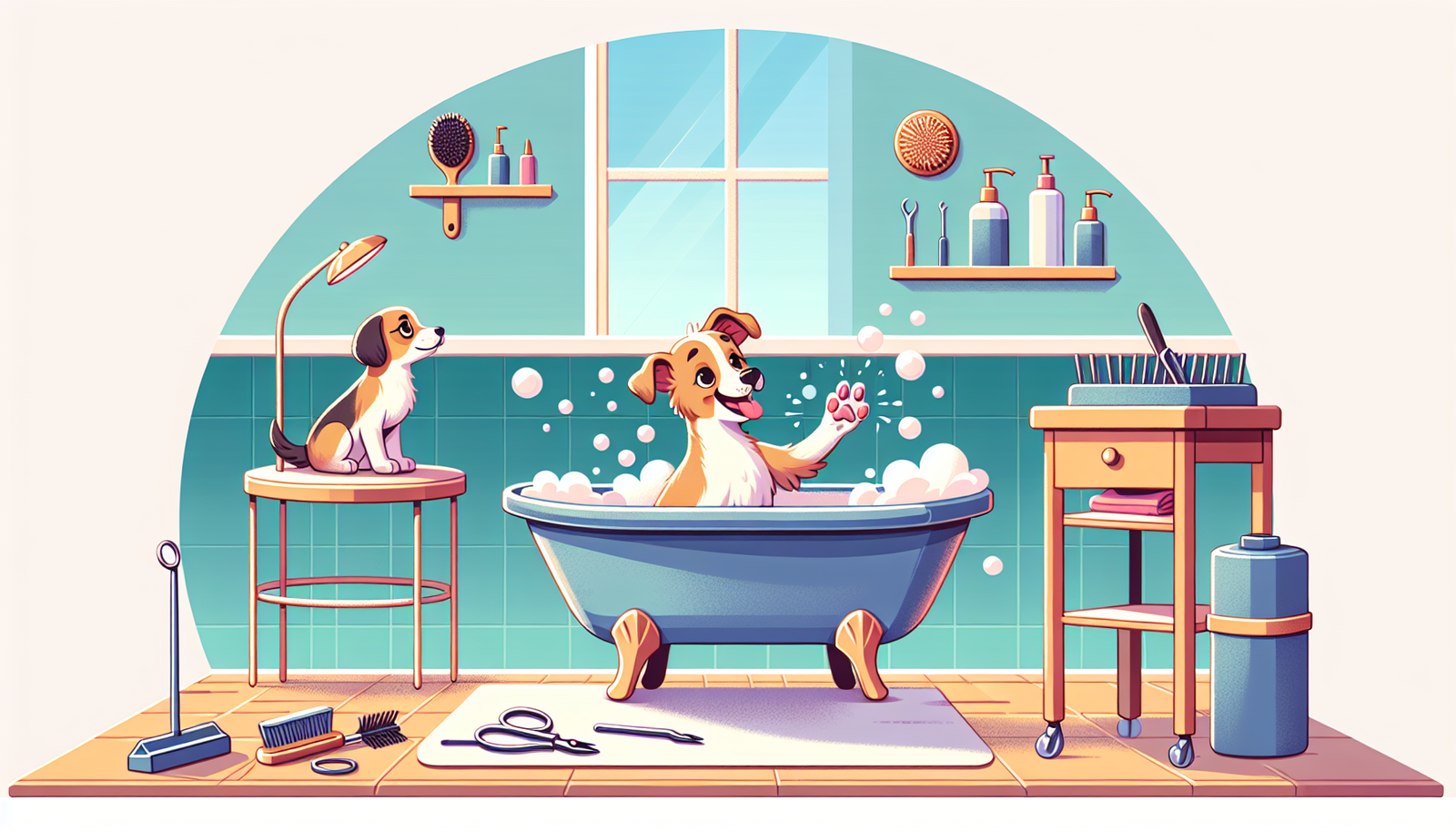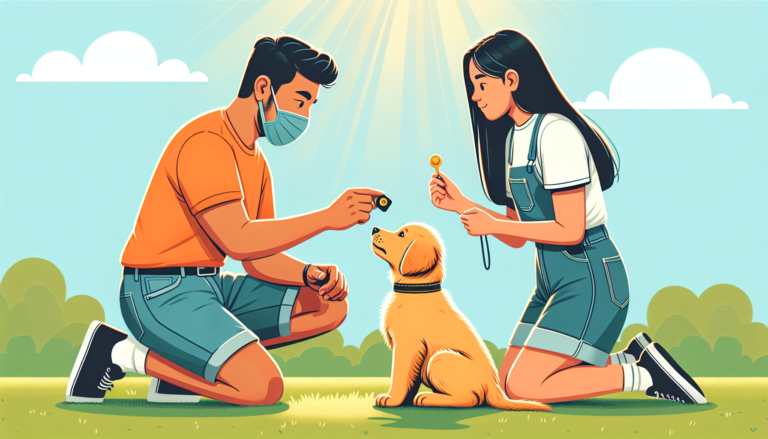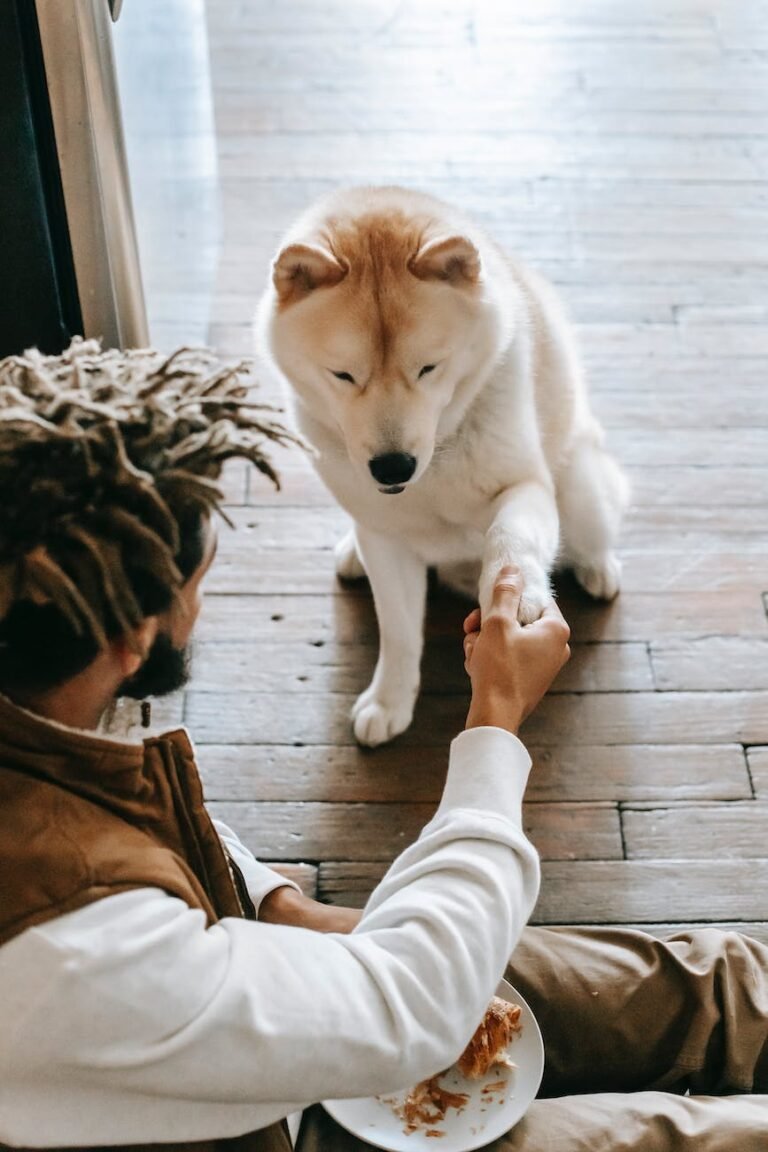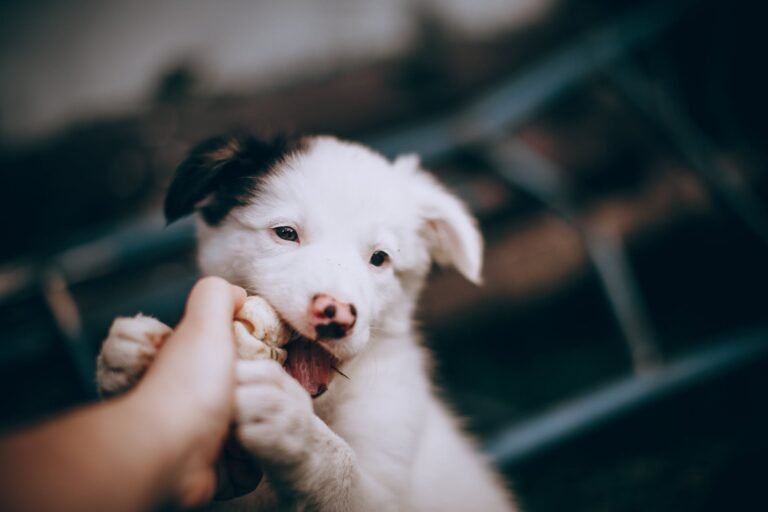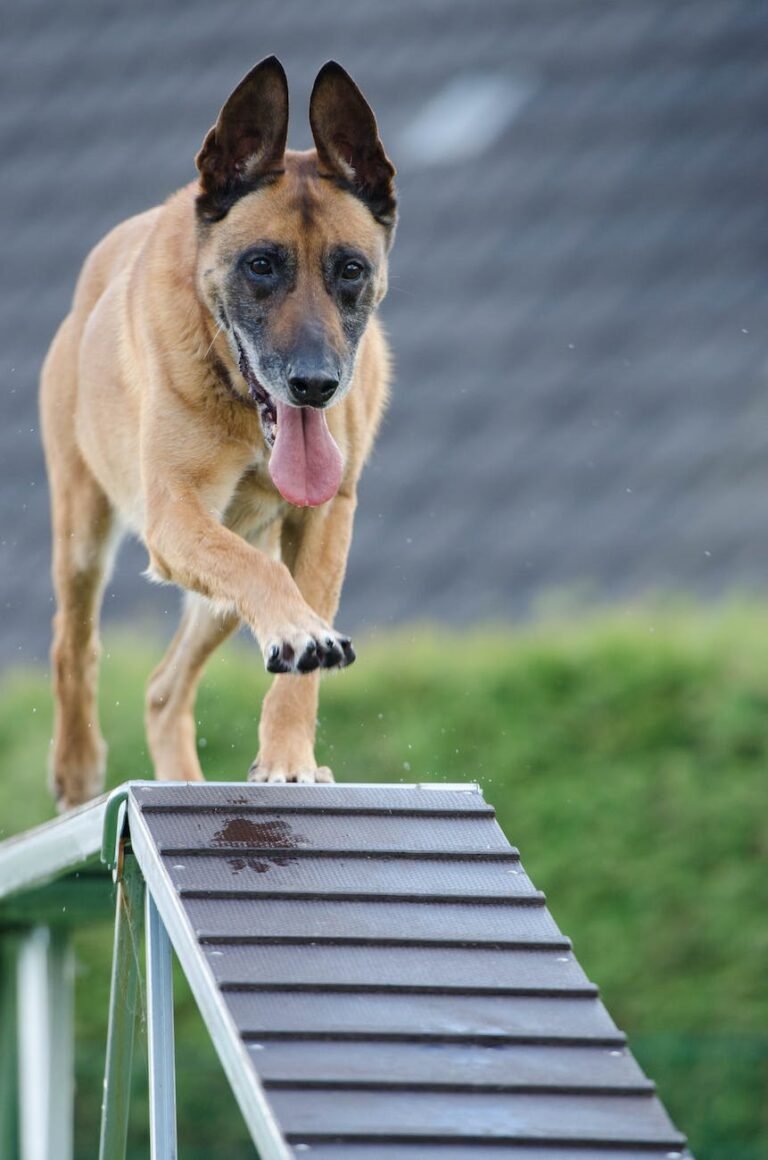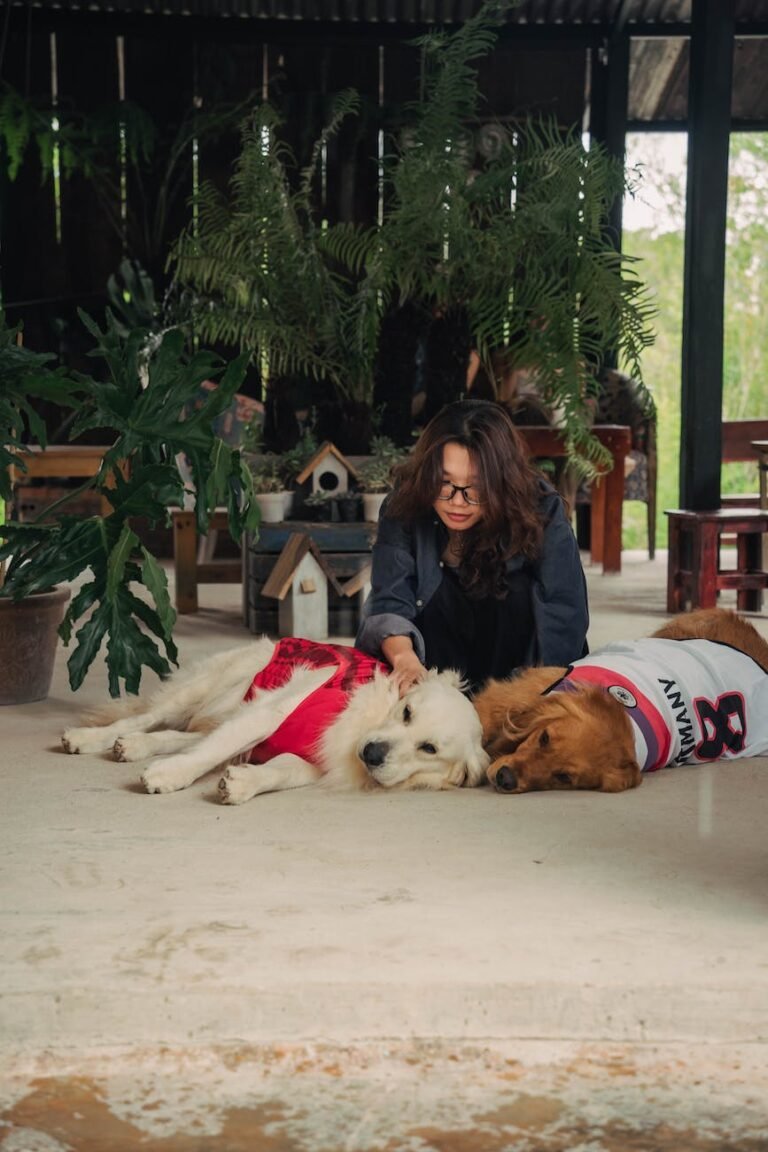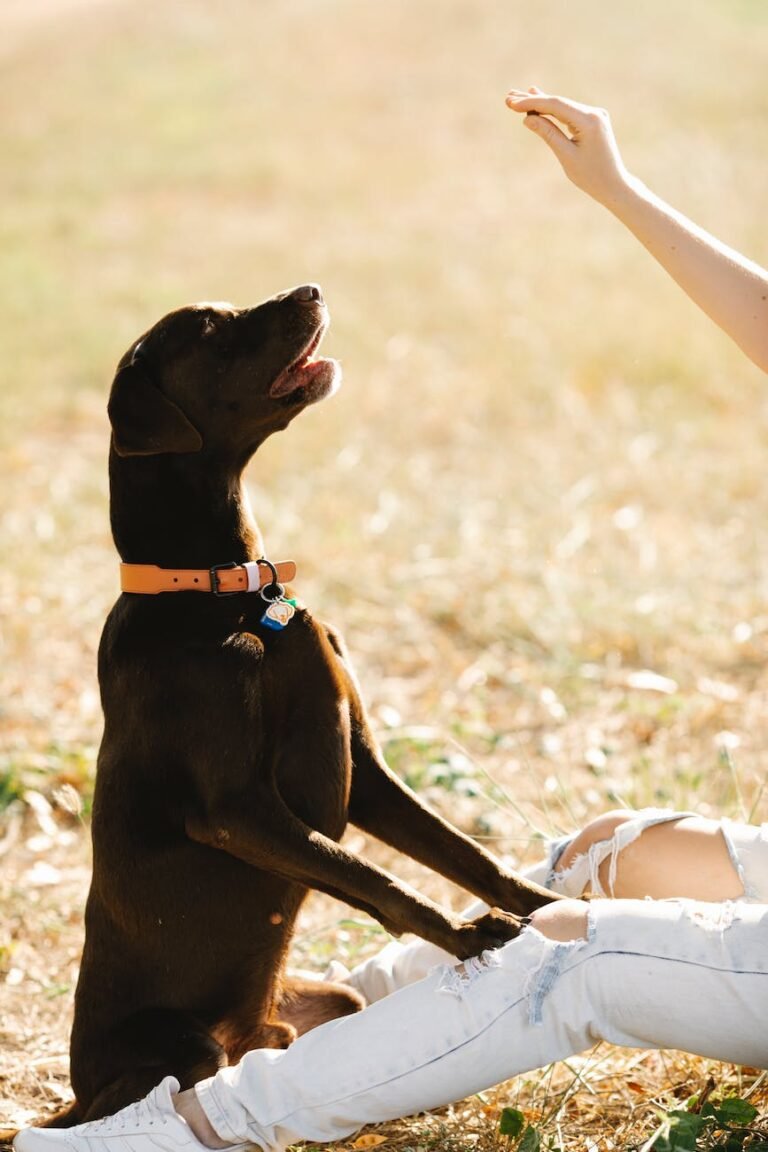What Are The Top Ways To Groom My Dog At Home?
If you’re a proud dog owner looking to keep your furry friend looking and feeling their best, you may be wondering what the top ways to groom your dog at home are. From bathing and brushing to nail trimming and ear cleaning, there are several essential grooming tasks that can easily be done in the comfort of your own home. By taking the time to learn and practice these techniques, you can save money on professional grooming services while also providing your dog with the care and attention they deserve. In this article, we will explore some of the top ways to groom your dog at home, ensuring they stay clean, healthy, and oh-so-cozy. Grooming your dog at home is not only a great way to bond with your furry friend but also an essential part of their overall health and well-being. From brushing their coat to trimming their nails, there are several tasks you can do to keep your dog looking and feeling their best. This article will guide you through the top ways to groom your dog at home, providing tips and techniques for each aspect of the grooming process.
Brushing
Choose the right brush
When it comes to brushing your dog’s coat, it’s important to choose the right brush for their specific needs. Different breeds have different coat types, and each requires a brush that is suitable for their fur. For example, a slicker brush is ideal for removing loose hair and tangles in long-haired dogs, while a bristle brush works well for short-haired breeds. Do some research on your dog’s breed to determine the best brush for them.
Establish a regular brushing routine
Establishing a regular brushing routine is essential to keep your dog’s coat healthy and free from tangles or mats. Depending on the breed, you may need to brush your dog daily or a few times a week. Regular brushing not only helps to remove loose fur and prevent matting but also promotes a healthy coat and stimulates blood circulation.
Brush in the direction of hair growth
When brushing your dog’s coat, always remember to brush in the direction of hair growth. This ensures that you are effectively removing loose fur and preventing any discomfort to your furry friend. Brushing against the hair growth can cause discomfort and may even lead to skin irritation or damage.
Be gentle and patient while brushing
Brushing should be a pleasant experience for your dog, so it’s important to be gentle and patient throughout the process. Start by gently brushing the outer layers of the coat and gradually work your way towards the skin. If your dog has any sensitive areas, such as the belly or ears, be extra careful and use slow, gentle strokes to avoid causing any discomfort.
Pay attention to sensitive areas
Some dogs have more sensitive areas than others, such as the ears, tail, or paws. These areas may require extra attention during brushing. Take the time to gently brush and inspect these sensitive areas, making sure to remove any tangles or mats that may have formed.
Remove any tangles or mats
Tangles and mats can be uncomfortable for your dog and can also lead to more serious skin issues if left untreated. If you come across any tangles or mats while brushing, do not tug or pull on them, as this can cause pain and discomfort. Instead, use a detangling spray or a specialized mat remover tool to carefully and gently work through the tangle or mat.
Consider using a detangling spray
For dogs with long or easily tangled hair, using a detangling spray can be incredibly helpful. A detangling spray helps to soften the fur and makes it easier to brush through tangles and mats without causing any discomfort to your dog. Simply spray the detangling solution onto the affected area and use a brush to gently work through the tangles.
Bathing
Gather all necessary supplies
Before bathing your dog, gather all the necessary supplies to ensure a smooth and efficient process. This includes dog-specific shampoo, towels, a non-slip mat for the bathing area, a brush, and any additional grooming tools you may need.
Use lukewarm water
When it comes to bathing your dog, always use lukewarm water. Water that is too hot or too cold can be uncomfortable for your furry friend and may even cause stress or anxiety. Fill the tub or sink with enough water to comfortably cover your dog’s body, allowing them to stand or sit without difficulty.
Select a dog-specific shampoo
Using a dog-specific shampoo is crucial during bath time. Human shampoos can be too harsh for a dog’s sensitive skin and may cause irritation or dryness. Opt for a shampoo that is specifically formulated for dogs, taking into consideration their breed, coat type, and any specific skin conditions they may have.
Start with a thorough rinse
Before applying shampoo, start by giving your dog a thorough rinse to remove any loose dirt or debris. Use a handheld showerhead or a cup to gently wet your dog’s entire body, making sure to avoid getting water directly into their ears, eyes, or nose.
Apply the shampoo and lather
Once your dog is thoroughly wet, apply the dog-specific shampoo and lather it gently onto their coat. Be sure to massage the shampoo into their fur, paying close attention to any areas that may be dirty or prone to odor. Use your hands or a bath mitt to work the shampoo through the fur, ensuring that it reaches the skin for a thorough cleanse.
Rinse thoroughly to remove all soap
After lathering, rinse your dog’s coat thoroughly to remove all traces of soap. It’s essential to rinse their coat well to prevent any residue from causing skin irritation or dryness. Continue rinsing until the water runs clear and there are no more suds.
Dry your dog with a towel or hairdryer
Once your dog is rinsed, it’s time to dry them off. Start by using a clean towel to gently pat them dry, absorbing as much moisture as possible. Be sure to pay extra attention to the ears, paws, and underbelly, as these areas tend to retain moisture. If your dog is comfortable with it, you can also use a hairdryer on a low heat setting to speed up the drying process. However, make sure to keep the hairdryer at a safe distance from your dog’s skin to avoid any burns or discomfort.
Be cautious with the frequency of bathing
While regular bathing is essential to keep your dog’s coat clean and healthy, it’s important to be cautious with the frequency. Over-bathing can strip the natural oils from your dog’s skin, leading to dryness and irritation. The frequency of bathing depends on several factors, including your dog’s breed, coat type, and activity level. It’s best to consult with your veterinarian to determine the appropriate bathing schedule for your furry friend.
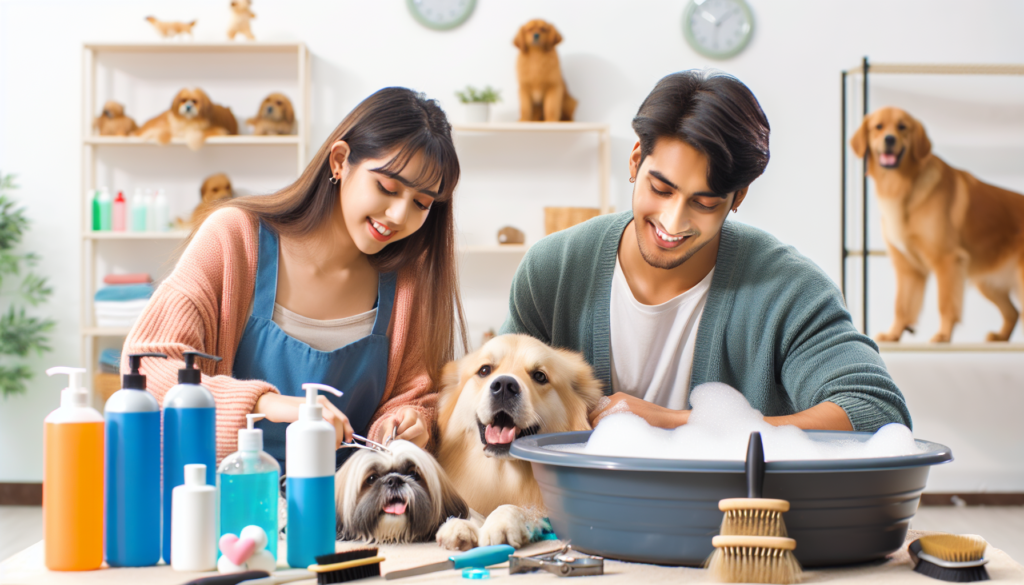
Trimming Nails
Get the right tools for nail trimming
Trimming your dog’s nails is a vital part of their grooming routine, and having the right tools is essential for a safe and efficient process. Invest in quality nail clippers or a nail grinder specifically designed for dogs. Choose a tool that you are comfortable using, as it will help you trim your dog’s nails with confidence and precision.
Introduce your dog to nail trimming gradually
Some dogs may be apprehensive or fearful when it comes to nail trimming, especially if they haven’t been exposed to it before. To make the process more comfortable for your dog, introduce them to nail trimming gradually. Start by allowing them to sniff and inspect the nail clippers or grinder without any pressure. Offer treats and praise to create a positive association with the tools.
Choose a calm and quiet environment
Creating a calm and quiet environment is crucial when it comes to nail trimming. Find a quiet area in your home where you and your dog can both relax during the process. Ensure that there are no distractions or loud noises that may startle your dog. The more relaxed your dog feels, the easier it will be to trim their nails.
Hold the paw gently but firmly
When trimming your dog’s nails, it’s important to hold their paw gently but firmly. This helps to provide stability and ensures that your dog is secure throughout the process. If your dog becomes anxious or uncomfortable, take a break and offer soothing words and treats to help them relax.
Trim small portions at a time
When it comes to trimming nails, it’s important to do it in small portions. Do not attempt to trim a large portion of the nail at once, as this can be painful and may cause bleeding. Instead, trim a small portion of the nail at a time, avoiding the quick, which is the sensitive part of the nail that contains blood vessels and nerves.
Avoid cutting into the quick
One of the most critical aspects of nail trimming is to avoid cutting into the quick. The quick is the pinkish area within the nail that contains blood vessels and nerves. Cutting into the quick can be painful for your dog and may result in bleeding. Take your time and trim slowly, always being cautious of the quick. If you are unsure about the location of the quick, consult with your veterinarian or a professional groomer.
Use a grinder as an alternative
If your dog is fearful of nail clippers or if their nails are too thick, using a grinder can be a viable alternative. A grinder allows you to shape and smooth the nails without the risk of cutting into the quick. Introduce the grinder to your dog gradually, allowing them to become familiar with the sound and sensation. Always follow the manufacturer’s instructions and use the grinder with caution.
Cleaning Ears
Examine the ears for signs of infection
Regularly examining your dog’s ears is an important part of their grooming routine. Look out for any signs of infection, such as redness, swelling, discharge, or a foul odor. If you notice any abnormalities, consult with your veterinarian for appropriate treatment.
Use a dog-specific ear cleaning solution
Using a dog-specific ear cleaning solution is essential for keeping your dog’s ears clean and free from excessive wax or debris. Avoid using cotton swabs or any other objects to clean the ears, as this can lead to injury. Dog-specific ear cleaning solutions are designed to dissolve wax and help remove dirt and debris effectively.
Apply the solution to a cotton ball or pad
To clean your dog’s ears, apply the ear cleaning solution to a cotton ball or pad. Saturate the cotton ball with the solution, making sure that it is damp but not dripping. This allows you to have better control when cleaning the ears and prevents any excess solution from entering the ear canal.
Gently wipe the visible part of the ear
With the damp cotton ball or pad, gently wipe the visible part of your dog’s ear, including the outer ear flap and the inner folds. Be careful not to apply too much pressure or go too deep into the ear canal, as this can cause discomfort or injury. Focus on removing any wax or debris that may have accumulated.
Avoid inserting anything into the ear canal
It’s important to avoid inserting anything, such as cotton swabs or your finger, into your dog’s ear canal. The ear canal is delicate, and attempting to clean it yourself can cause injury or damage. If you notice any signs of infection or if your dog is experiencing discomfort, consult with your veterinarian for appropriate treatment.
Consult a veterinarian if you notice any issues
If you notice any persistent issues with your dog’s ears, such as recurring infections or excessive wax buildup, it’s important to consult with your veterinarian. They can provide a thorough examination, diagnose any underlying issues, and recommend appropriate treatment to ensure your dog’s ears remain healthy.
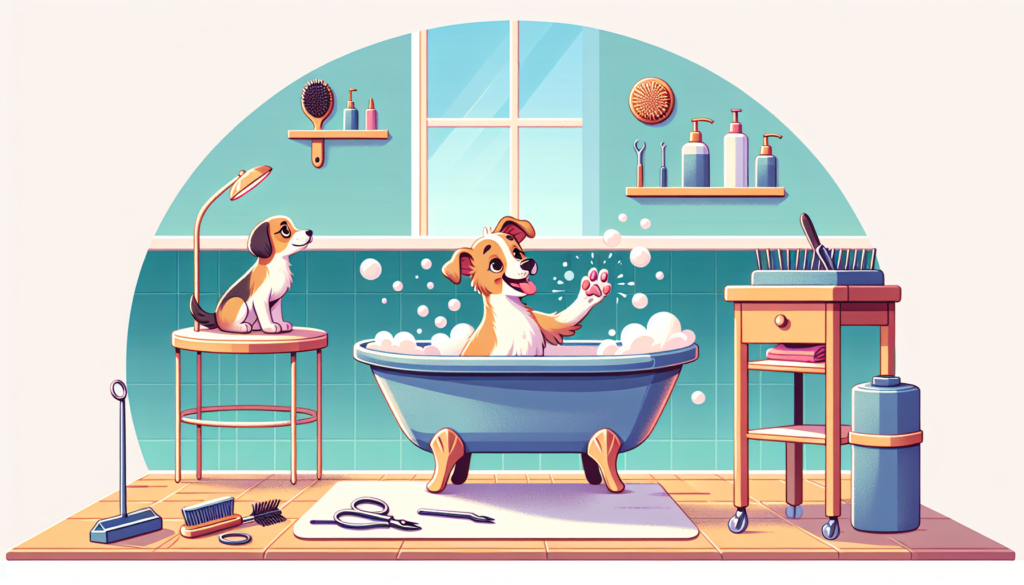
Maintaining Dental Hygiene
Introduce dental care at an early age
Maintaining your dog’s dental hygiene should start as early as possible. Introduce dental care to your dog when they are young, allowing them to become familiar with the process and making it easier for them to accept regular tooth brushing. The earlier you start, the better the chances of preventing dental issues later in life.
Use a dog-specific toothbrush and toothpaste
Using a dog-specific toothbrush and toothpaste is crucial when it comes to maintaining your dog’s dental hygiene. Human toothpaste contains ingredients, such as xylitol, that can be toxic to dogs if ingested. Choose a toothbrush that is specifically designed for dogs, along with a toothpaste that is formulated for canine oral health.
Start with gentle tooth brushing motions
When introducing your dog to tooth brushing, start with gentle motions to get them used to the sensation. Use your finger or a soft cloth to rub their teeth and gums in small circular motions. Gradually progress to a toothbrush, using small, gentle strokes to clean their teeth.
Focus on the outer surfaces of the teeth
When brushing your dog’s teeth, focus on the outer surfaces, as these areas tend to accumulate more plaque and tartar. Aim to brush at a 45-degree angle, targeting the gum line where bacteria tend to accumulate. Pay special attention to the back molars, as these teeth are more susceptible to tartar buildup.
Be consistent with regular brushing
Consistency is key when it comes to brushing your dog’s teeth. Aim to brush their teeth at least two to three times a week, or as recommended by your veterinarian. Consistent brushing helps to prevent plaque and tartar buildup, reducing the risk of dental diseases.
Consider dental treats or toys for supplementary care
In addition to regular tooth brushing, consider incorporating dental treats or toys into your dog’s routine. Dental treats are specifically designed to help clean your dog’s teeth while satisfying their chewing instincts. Look for treats that have a texture or shape that promotes dental health. Dental toys, such as rubber chew toys or dental ropes, can also help remove plaque and tartar while providing mental stimulation for your dog.
Schedule professional dental cleanings if needed
Even with regular at-home dental care, there may come a time when your dog requires a professional dental cleaning. Professional cleanings are performed under anesthesia and involve a thorough examination, scaling, and polishing of the teeth. If you notice signs of significant tartar buildup, persistent bad breath, or other dental issues, consult with your veterinarian for a professional dental cleaning.
Trimming Hair
Research breed-specific hair trimming requirements
Different dog breeds have varying hair trimming requirements, so it’s important to research and understand your dog’s specific needs. Some breeds require regular haircuts to maintain a certain coat length, while others may only need occasional trimming to remove excess fur or to prevent matting. Take the time to learn about your dog’s breed-specific grooming requirements to ensure their coat stays healthy and manageable.
Invest in quality grooming scissors or clippers
Investing in quality grooming scissors or clippers is essential for a successful hair trimming session. The type of tool you choose depends on your dog’s coat length and thickness. For longer coats, consider using scissors for precision trimming, while clippers may be more suitable for shorter coats or removing bulk.
Be cautious with length and thickness of the coat
When trimming your dog’s hair, it’s important to be cautious with the desired length and thickness. Remember that certain areas, such as the face, paws, and tail, may require shorter hair to maintain cleanliness and prevent tangling. If you are unsure about how much hair to remove or what style would suit your dog best, consult with a professional groomer for guidance.
Start slowly and carefully
If you are new to trimming your dog’s hair, start slowly and carefully. Take your time and allow your dog to become familiar with the process. Offer treats and praise to create a positive experience. Begin with small trims to remove excess fur or to shape specific areas, such as around the face or paws.
Trim in small sections
When trimming your dog’s hair, it’s best to work in small sections. This allows you to have better control over the scissors or clippers, reducing the risk of cutting too much hair or accidentally injuring your dog. Trim the hair in short, gentle motions, and continuously check your progress to ensure an even and balanced look.
Pay attention to sensitive areas and body parts
Some areas of your dog’s body may be more sensitive than others, so it’s important to pay extra attention and proceed with caution. Areas such as the ears, armpits, and groin are commonly more delicate and may require a gentler touch. Always use care and take breaks as needed to prevent any discomfort to your dog.
Consider seeking professional help if necessary
If you find that trimming your dog’s hair is too challenging or if you are unsure about how to achieve the desired results, consider seeking professional help. Professional groomers have the expertise and experience to handle different coat types and styles. They can help you achieve the desired look while ensuring the safety and comfort of your furry friend.
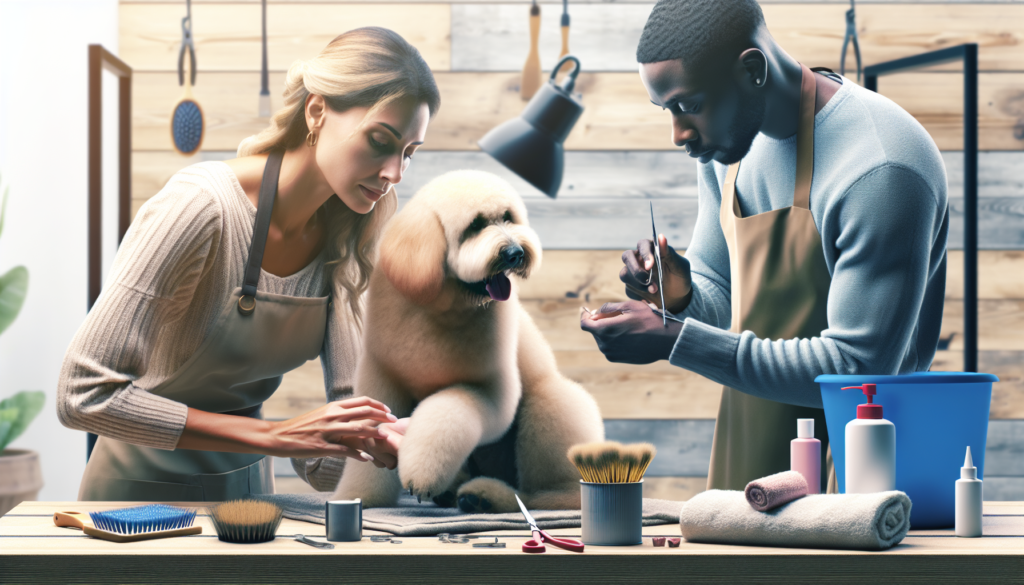
Dealing with Shedding
Regularly brush your dog to remove loose fur
Regular brushing is essential for dealing with shedding and keeping your dog’s coat healthy. Brushing helps to remove loose fur before it ends up on your furniture and clothes. The frequency of brushing depends on your dog’s coat type and shedding level. Breeds with longer or thicker coats may require daily brushing, while breeds with shorter or less dense coats may benefit from a few brushings per week.
Use a deshedding tool or slicker brush
To effectively remove loose fur and minimize shedding, consider using a deshedding tool or a slicker brush. Deshedding tools, such as a shedding blade or a furminator, are designed to reach deep into the undercoat and remove loose fur. Slicker brushes work well for removing loose hair from the topcoat and helping to prevent matting.
Pay extra attention during shedding seasons
Dogs shed their coat seasonally, with shedding seasons occurring in the spring and fall. During these times, dogs tend to shed more heavily to prepare for the upcoming season. Pay extra attention to your dog’s grooming routine during shedding seasons, brushing more frequently to remove the excess fur.
Consider adding omega-3 fatty acids to the diet
Adding omega-3 fatty acids to your dog’s diet can help promote healthy skin and coat. These essential fatty acids are known to reduce inflammation, improve skin condition, and minimize excessive shedding. Consult with your veterinarian for appropriate omega-3 supplements or foods that contain high levels of these beneficial fatty acids.
Ensure a healthy and balanced diet
A healthy and balanced diet plays a crucial role in managing shedding and maintaining a healthy coat. Ensure that your dog’s diet is rich in essential nutrients, including protein, vitamins, and minerals. A diet that lacks essential nutrients can lead to poor coat condition and excessive shedding. Consult with your veterinarian to determine the best diet for your dog’s specific needs.
Vacuum and clean your living space regularly
Dealing with shedding is not just about grooming your dog; it also involves keeping your living space clean. Vacuum and clean your home regularly to remove any loose fur that may have accumulated on the floors, furniture, or carpets. Consider using lint rollers or pet-specific cleaning tools to help remove fur from upholstery or clothing.
Caring for the Eyes
Inspect the eyes for any abnormalities
Caring for your dog’s eyes involves regularly inspecting them for any abnormalities. Look out for signs of redness, discharge, cloudiness, or any changes in the appearance of the eyes. If you notice anything out of the ordinary, consult with your veterinarian for further examination and appropriate treatment.
Wipe away any discharge with a damp cloth
Sometimes, dogs may develop eye discharge due to allergies or environmental irritants. To keep your dog’s eyes clean and comfortable, gently wipe away any discharge with a damp cloth. Use lukewarm water or a dog-specific eye cleansing solution to moisten the cloth before gently wiping the discharge away. Be careful not to make any contact with the eyeball itself, as this can cause discomfort or injury.
Avoid any contact with the eyeball
It’s crucial to avoid any contact with your dog’s eyeball when cleaning their eyes. The eyeball is delicate and easily irritated, so it’s best to focus on cleaning the surrounding area and wiping away any discharge or dirt. If you notice any persistent eye issues or if your dog is showing signs of discomfort, consult with your veterinarian for appropriate treatment.
Consider using a specialized eye rinse
If your dog frequently experiences eye irritation or discharge, you may consider using a specialized eye rinse. Dog-specific eye rinses are designed to soothe and cleanse the eyes, helping to reduce irritation and remove debris. Follow the instructions provided with the eye rinse and consult with your veterinarian if you have any concerns.
Protect your dog’s eyes during outdoor activities
When engaging in outdoor activities with your dog, it’s important to protect their eyes from potential hazards. This is especially important if you are participating in activities such as hiking, swimming, or playing fetch. Consider using dog goggles or sports eyewear to shield your dog’s eyes from debris, UV rays, or any potential injuries.
Consult a veterinarian if you notice persistent issues
If you notice any persistent eye issues, such as excessive tearing, redness, cloudiness, or any changes in vision, it’s important to consult with your veterinarian. These symptoms may indicate an underlying eye condition that requires professional diagnosis and treatment.
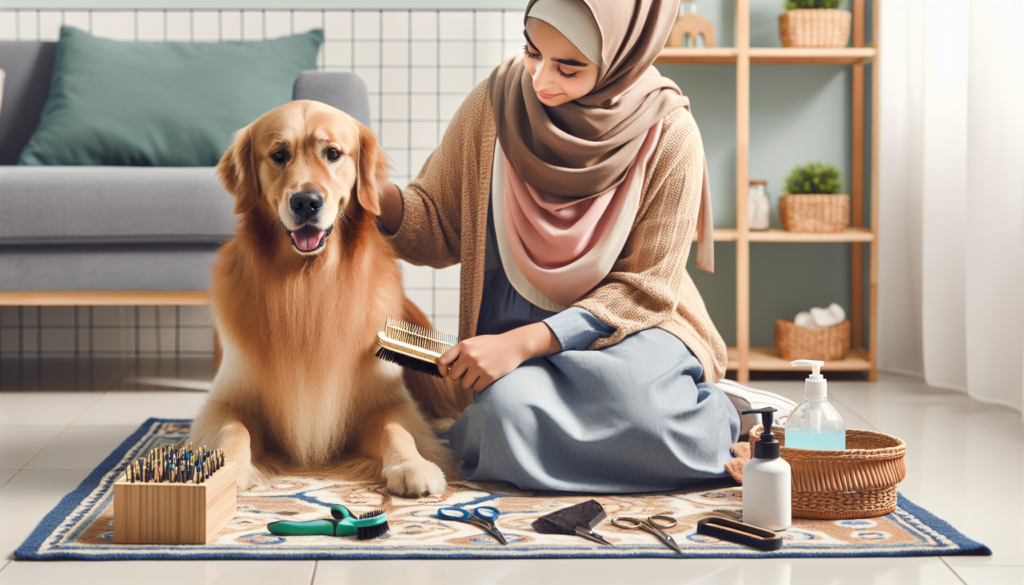
Keeping the Paws Clean
Regularly trim the hair around the paws
Regularly trimming the hair around your dog’s paws is crucial for maintaining their paw health. Overgrown hair can trap moisture, dirt, and debris, leading to discomfort and potential infections. Use grooming scissors or clippers to carefully trim the hair around the paws, ensuring that it is not too long but also not too short to protect the paw pads.
Inspect the paws for any injuries or irritations
Caring for your dog’s paws involves regular inspections to check for any injuries, irritations, or foreign objects. Look out for cuts, sores, swelling, or areas of redness. Check between the toes and examine the paw pads for any signs of cracking or dryness. If you notice any abnormalities or if your dog shows signs of discomfort, consult with your veterinarian for appropriate treatment.
Clean the paws with a damp cloth
To keep your dog’s paws clean, gently wipe them with a damp cloth after outdoor activities. This helps remove any dirt, mud, or debris that may have accumulated on their paws. Be sure to dry the paws thoroughly afterward to prevent moisture buildup, which can lead to discomfort and potential infections.
Wipe away any mud or debris
If your dog’s paws are muddy or covered in debris, it’s important to wipe them clean before entering your home. Use a damp cloth or pet-friendly wipes to gently wipe away any mud or debris, paying close attention to the areas between the toes and the paw pads. This helps prevent tracking dirt or debris into your living space and reduces the risk of irritation or infections.
Consider using pet-friendly paw wipes
Pet-friendly paw wipes are designed to effectively clean your dog’s paws without causing any irritation or dryness. These wipes are convenient to use and can be easily carried with you during outdoor activities or walks. Simply wipe your dog’s paws with the wipes to remove any dirt or debris, providing instant cleanliness and refreshment.
Moisturize the paw pads if they appear dry
If your dog’s paw pads appear dry or cracked, consider applying a paw pad moisturizer or balm. Paw balms help to keep the paw pads moisturized and protected, reducing the risk of dryness, cracking, or discomfort. Follow the instructions provided with the product and consult with your veterinarian for specific recommendations.
Check for any signs of discomfort or limping
Regularly check your dog’s paws for any signs of discomfort or limping. If your dog is consistently licking or chewing their paws, favoring a specific leg, or showing signs of pain, it may indicate an injury or infection. Excessive licking or chewing can also lead to further irritation or damage. If you notice any persistent signs of discomfort, consult with your veterinarian for appropriate diagnosis and treatment.
Brushing Teeth
Use a dog-specific toothbrush and toothpaste
Brushing your dog’s teeth is an essential part of maintaining their oral health, and using the right tools is key. Use a dog-specific toothbrush and toothpaste when brushing their teeth. Dog-specific toothbrushes are designed with soft bristles and a shape that is suitable for a dog’s mouth. Dog-specific toothpaste is formulated to be safe if ingested, as dogs cannot spit out toothpaste like humans can.
Introduce tooth brushing gradually
Introducing tooth brushing gradually is vital for your dog to accept and enjoy the process. Start by allowing your dog to sniff and lick the toothbrush and toothpaste to get familiar with the taste and texture. Next, gently rub their teeth and gums with a finger or a soft cloth, gradually progressing to a toothbrush.
Start with gentle circular motions on the teeth
When brushing your dog’s teeth, start with gentle circular motions on the teeth and gums. Aim to cover the outer surfaces of the teeth, as this is where plaque and tartar tend to accumulate the most. Be patient and calm during the process, offering praise and rewards to create a positive experience for your dog.
Focus on the outer surfaces of the teeth
While brushing your dog’s teeth, focus on the outer surfaces of the teeth, as these areas are more prone to plaque and tartar buildup. Brushing the inner surfaces may be challenging, especially at first, so it’s best to seek guidance from your veterinarian for additional oral care techniques.
Be consistent with brushing frequency
Consistency is key when it comes to brushing your dog’s teeth. Aim to brush their teeth at least two to three times a week, or as recommended by your veterinarian. Regular brushing helps to remove plaque and tartar, reducing the risk of dental issues such as gum disease or tooth decay.
Avoid human toothpaste containing xylitol
It’s important to avoid using human toothpaste when brushing your dog’s teeth, as most contain xylitol, an artificial sweetener that can be toxic to dogs. Xylitol ingestion can cause a dangerous drop in blood sugar levels and may lead to liver damage. Stick to dog-specific toothpaste that is formulated to be safe if ingested.
Ask your veterinarian for specific advice
Every dog is unique, and their dental care needs may vary. If you have specific concerns about your dog’s oral health or if you need additional guidance on brushing techniques, it’s best to consult with your veterinarian. They can provide personalized advice and recommend suitable dental care products for your furry friend.
In conclusion, grooming your dog at home is an important part of their overall care and well-being. By following the top ways to groom your dog at home outlined in this article, you can ensure that your furry friend stays clean, healthy, and happy. From brushing their coat to keeping their teeth clean and their paws well-maintained, these grooming practices will help your dog look and feel their best. Remember to always approach grooming with patience, gentleness, and a positive attitude, creating a bonding experience with your furry best friend.

